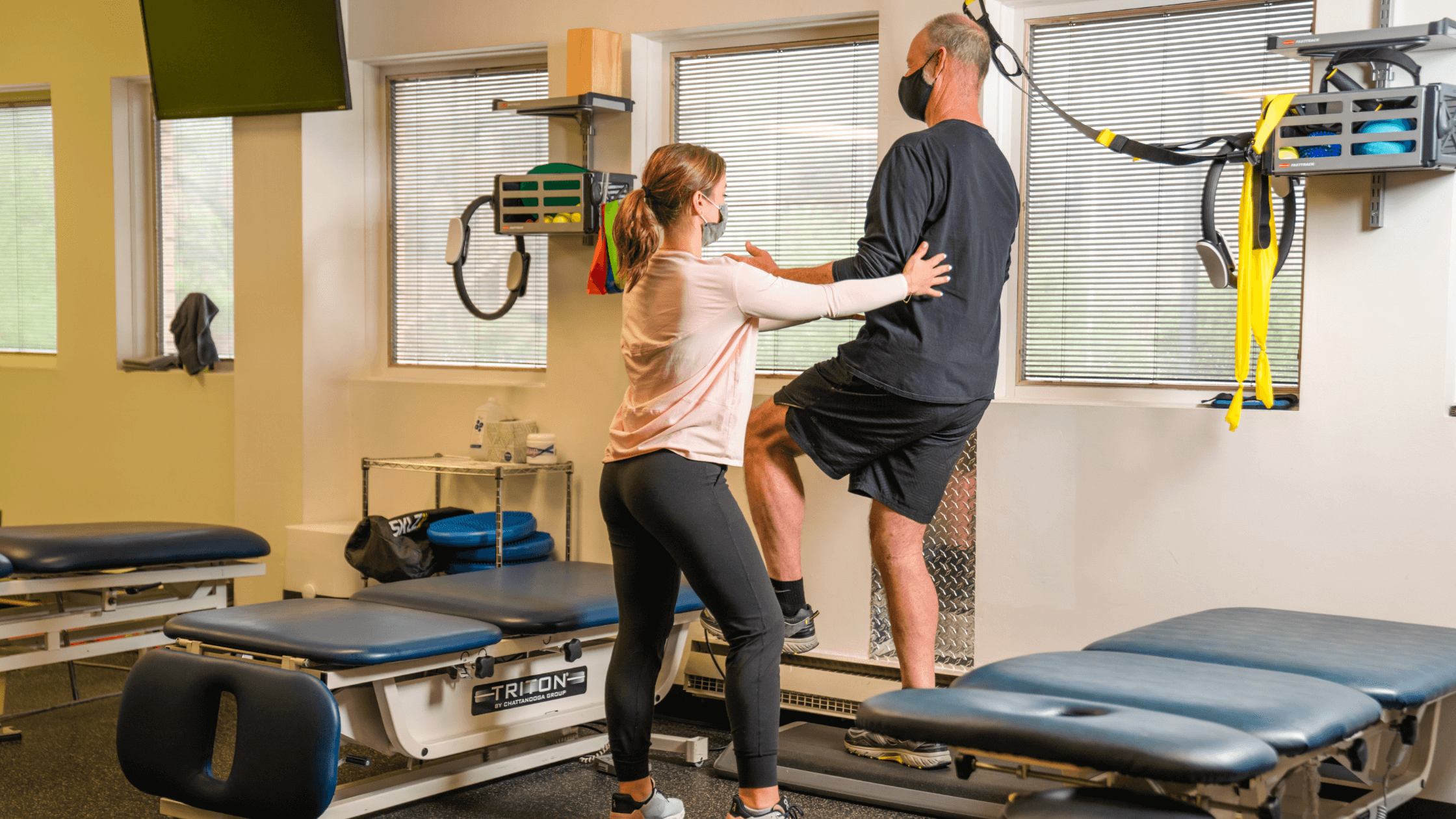Shin Splints: Tips For Recovery

PT, MSPT, Founding Partner
Picture this: it’s a beautiful day outside, and you decide to replace your daily gym routine with a nice run. After your warm-up, you pick up a good pace, feeling your heart pounding in your chest and the sun on your face. Suddenly, you feel a searing pain in the front of your shin that causes you to come to a full stop. You wonder, what in the world was that? Then, you worry that you may be suffering from a very common stress response for any runner: shin splints.
Almost every runner, even the most dedicated, has had shin splints at some point in their life. It can be very painful at first, but if you make the right decisions and let your body heal the way it needs to, you will be back to your normal routine in no time.
We see many runners here at EW Motion Therapy, and to avoid injury, we focus on building strength and making sure your muscles are functioning properly. We created our EW Run program to help runners achieve their goals in a way that does not lead to overtraining. Even if our Run program does not fit your needs, we still want to offer advice on how to avoid injury and recover well when injuries do occur.
This article will discuss what shin splints are and some of the best ways to recover. With this information, instead of trying to run in pain, you will know how to not make them worse if they occur again.
What are shin splints?
In essence, shin splints are a stress response. There is a muscle in your leg called the anterior tibialis, and this muscle is what pulls the top of your foot and your toes up towards your shin, in an essential running movement known as dorsiflexion. The anterior tibialis is smaller than other muscles in your leg, but it does a very important job. When this muscle gets overstressed at its connection to the bone, this causes the pain we know as shin splints.
Shin splints can occur in any age group as a response to a lack of training or overtraining, but they are most common in younger runners, high school age and below. For example, it can happen when a high school runner starts cross country or track workouts and they haven’t done any base training in several months. While the intensity of the pain can cause some alarm, do not panic. The condition is very common and will heal under the right circumstances.
How do you treat shin splints?
So how do you get back to running after a stint with shin splints? The best method of healing is much less complicated than you think.
The best way of healing from shin splints is to simply rest. That’s it. It really is that easy. To let the muscle heal, you need to stop doing whatever caused its stress response for a while. If you were running when it happened, don’t run for a period of time, which may be 2-6 weeks. I know it’s hard, but this really is one of the best things you can do for your body.
While you are healing, you can incorporate exercises into your routine that keep the muscle moving and increase blood flow. Try sitting on the kitchen counter dangling your feet. You can then put some weight on your toes, like an ankle weight, and lift the weight up and down with your foot. This uses that anterior tibialis muscle without overworking it.
You should not go back to running too soon - that just puts more stress on the muscle that is trying to heal. Start with some pain-free walks, then add in one-minute runs for every 5 minutes of walking. Gradually increase your running time based on your pain level, and when you can run for 20 minutes without pain, then your muscle is ready to perform again.
Healing time depends on the person, but generally, muscle tissue heals in about 6 weeks. It may heal quicker than that if you are young and healthy, but estimate around 2-6 weeks of recovery time to get back to that 20-minute pain-free run.
How else should I recover?
Now you know more about what shin splints really are and how you can recover from the injury. Recovery is essential for any athlete, especially runners, and developing a consistent recovery routine can help your body perform better.
At EW Motion Therapy, we know how important running is to you. We want to help runners recover from their injuries and teach them new ways of training that will help them avoid future injuries. Our ultimate goal is to help you reach your goals and improve performance in ways that make you feel great inside and out. To learn more about our Run program and scheduling an evaluation, fill out our Request an Appointment form, and someone from our staff will contact you within 48 hours with your next steps.

